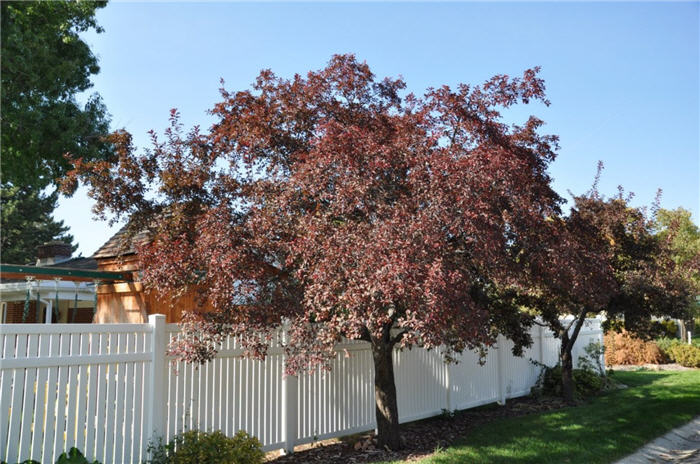| Botanical Name: Prunus padus | |
| Common Name: European Birdcherry |

-
Anatomy
-
Culture
-
Design
Plant Type
Tree
Height Range
12-25', 25-40'
Flower Color
White
Flower Season
Spring
Leaf Color
Green
Bark Color
Brown, Grey
Fruit Color
Black
Fruit Season
Summer
Sun
Full, Half
Water
Medium
Growth Rate
Moderate
Soil Type
Sandy, Clay, Loam, Rocky, Unparticular
Soil Condition
Average, Rich, Poor, Well-drained, Dry
Soil pH
Neutral, Basic
Adverse Factors
Attracts Bees, Messy
Design Styles
English Cottage, Ranch
Accenting Features
Fragrance, Showy Flowers
Seasonal Interest
Summer, Fall
Location Uses
Background, Shrub Border, Foundation, Walls / Fences
Special Uses
Cut Flowers, Screen
Attracts Wildlife
Birds
Information by: Stephanie Duer
Photographer: wrong photo
Photographer: wrong photo
-
Description
-
Notes
Bird cherry is a deciduous ornamental tree that typically grows 20 to 40 feet tall and wide, with a rounded, dense crown. Fragrant white flowers in pendulous 3 to 6-inch long clusters appear after the foliage emerges in spring. Flowers are followed by astringent, pea-sized, black cherries which ripen in mid-summer. As with the closely-related chokecherry (Prunus virginiana), the fruit is extremely bitter to humans but loved by birds. Dull dark green leaves are elliptic and lightly serrated; foliage turns yellow in fall.
Grow in any well-drained soil, in full sun to part shade. Adaptable to a wide range of soils.